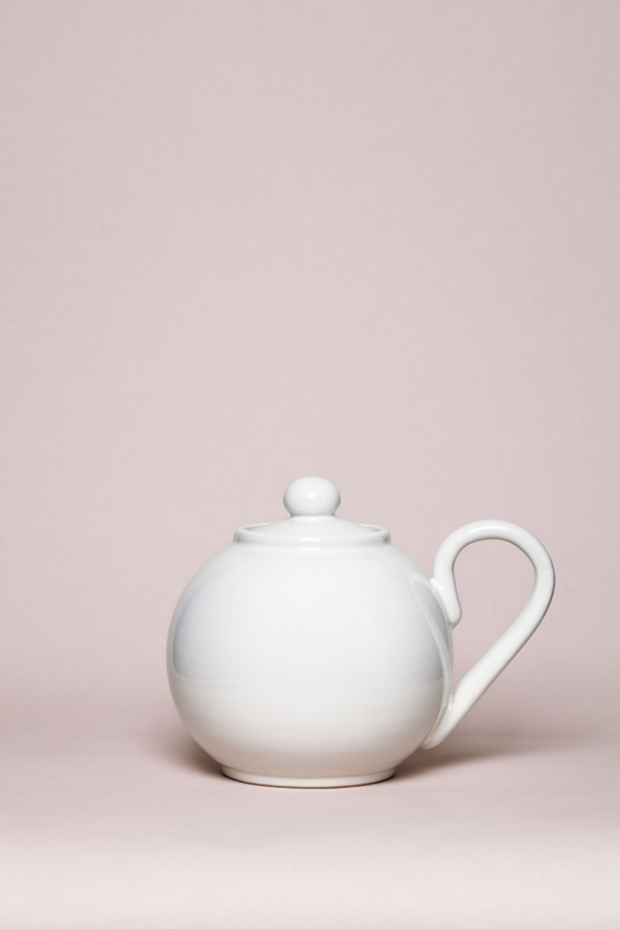Margot Sucksdorff Barolo


There are no innocent objects.
They all carry a silent testimony.
As a designer and producer, I move between all parts of production. I am the designer, but also the product developer, the strategist, the visionary, the economist, the co-worker, the project manager, the marketer. But, I am also a consumer, and I am fascinated by beautiful images, eye-catching logos and promises of a better, easier and more stylized life.
You hold in your hands the continuation of a project that started almost five years ago. After having worked as a designer on assignments and with my own productions for many years, more and more questions that demanded answers were cropping up. The result was an essay in book form: Brave New Production, where, among other things, I question prevalent structures and approaches within the multi-layered area that is production. I have now continued further and deeper into certain questions while leaving others behind. This is presented in a new magazine. This format allows me to highlight specific subjects, phenomena, events and people. These may appear to be disconnected, but I believe that they, in the highest degree, influence us in some form on the macro or micro level. It also allows me to work with others who may have something to contribute to the project in the form of new nuances and pieces of the puzzle.
I want to bring our notions of how we value objects to light based on how, where and by whom we believe them to be made. In the long run, it also mirrors how differently we value people. I believe that there are no innocent objects. They all have a background; they have all been touched by human beings and by machines and they are all the result of different systems. Their quality, price and appearance bear silent witness to this. I want to seek out the “dark” side of MADE IN and find out what is behind these significant and often decisive words, both in practice and in our notions and values. We are all part of a larger, holistic course of events; we are all affected, directly or indirectly. We are pulled in as consumers and winners at one end – but as citizens, we often become losers. My intention is not to give an answer as to what is better than something else. I want to ask inconvenient questions and try to find explanations for something which is far more complex than what most of us think, and not leave the discussion solely to those on the other side – politicians, companies, economists and theoreticians – but instead represent a party with different starting points. I want to tackle some of these subjects in ways that may contribute to them being highlighted and discussed by more people from all the aspects they deserve: historically, politically, artistically and economically. I would also like to approach from angles that we may not be so used to. Is it the case that the value we give the objects mirrors the value we give the people behind them?
Margot Sucksdorff Barolo, designer
They all carry a silent testimony.
Som formgivare och producent rör jag mig i alla produktionsled. Jag är designern men också produktutvecklaren, strategen, visionären, ekonomen, medarbetaren, projektledaren, marknadsföraren. Men, jag är också konsument och jag tjusas av vackra bilder, snygga logos och löften om ett bättre, lättare och snyggare liv.
Du håller i din hand en fortsättning på ett projekt som startades för snart fem år sedan. Efter att ha verkat som formgivare på uppdrag och i egen produktion i många år dök alltfler frågor upp som pockade på svar. Det resulterade i en essä i bokform: Brave New Production, där jag bland annat ifrågasätter rådande strukturer och synsätt inom det mångbottnade området produktion. Nu har jag tagit mig vidare och djupare i vissa frågor och jag har lämnat andra och presenterar det i ett nytt magasin. Ett format som tillåter mig att göra nedslag i ämnen, fenomen, skeenden och människor som till synes ligger långt ifrån varandra men som jag menar i högsta grad påverkar oss i någon form på macro eller micronivå. Det tillåter mig också att arbeta med andra som har något att tillföra projektet och bidrar med fler nyanser och pusselbitar.
Jag vill synliggöra våra föreställningar om hur vi värderar objekt utifrån hur, var och av vem vi tror att de är gjorda. I förlängningen speglar det också hur olika vi värderar människor. Jag menar att det inte finns några oskyldiga objekt. Alla har de en bakgrund, alla har de vidrörts av människor, maskiner och är resultat av olika system. Deras kvalité, pris och utseende bär en tyst vittnesbörd om detta. Jag vill söka mig till den ”mörka” sidan av MADE IN och vad som ligger bakom dessa betydelsefulla och ofta avgörande ord, både i praktiken och i våra föreställningar och värderingar. Alla är vi en del av ett större holistiskt skeende, alla är vi direkt eller indirekt drabbade, indragna som konsument och vinnare i ena änden - men som medborgare ofta en förlorare. Min intention är inte att komma med svaret om vad som är bättre än något annat. Jag vill ställa obekväma frågor och försöka hitta förklaringar på något som är långt mer komplext än vad de flesta av oss tror och inte överlämna diskussionen enbart till dem som finns på andra sidan: politiker, företag, ekonomer och teoretiker, utan finnas som en part med andra utgångspunkter. Jag vill här angripa några av dessa ämnen på sätt som kan bidra till att de lyfts fram i ljuset och diskuteras av fler och från alla de aspekter det förtjänar: historiskt, politiskt, konstnärligt och ekonomiskt. Gärna i vinklingar vi kanske inte är så vana vid. Är det så att det värde vi ger föremålen speglar värdet vi ger människorna bakom dessa?
Margot Sucksdorff Barolo, formgivare




